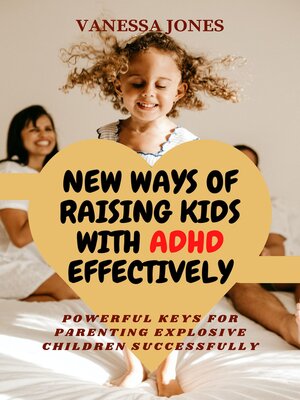NEW WAYS OF RAISING KIDS WITH ADHD EFFECTIVELY
ebook ∣ Powerful Keys for Parenting Explosive Children Successfully
By VANESSA JONES

Sign up to save your library
With an OverDrive account, you can save your favorite libraries for at-a-glance information about availability. Find out more about OverDrive accounts.
Find this title in Libby, the library reading app by OverDrive.



Search for a digital library with this title
Title found at these libraries:
| Library Name | Distance |
|---|---|
| Loading... |
A childhood ailment that has previously gone by numerous names has received this most recent diagnosis from psychiatrists.
The term "attention-deficit disorder" (ADD) was first used to describe the disease, followed by "hyperactivity-related attention deficit disorder" (HADD) to separate it from children who had ADD but did not show hyperactivity.
Psychiatrists have recognized attention-deficit hyperactivity disorder (ADHD), and the American Psychiatric Association has included its symptoms in its Diagnostic and Statistical Manual of Mental Disorders (DSM-5). Physicians, academics, and insurance companies all make use of the terminology in this guide, which is universally recognized. A significant parent and patient support group called C.H.A.D.D. still goes by the old term, ADD.
At least 3-5% of adults and 5-10% of children suffer from attention deficit hyperactivity disorder (ADHD). The prevalence of ADHD was not acknowledged until recently, even though specialists first identified it many years ago. ADHD is often accompanied by additional behavioral and emotional problems as well as academic challenges in reading, spelling, or math.
More men than women suffer from ADHD. Childhood ADHD is now recognized as a severe and usually chronic disorder, with symptoms commonly persisting into adolescence and adulthood. In the past, child psychiatrists used to assume that ADHD symptoms diminished and were eliminated as children aged.
A greater understanding of the causes and treatments of ADHD has also come to light along with growing awareness of the problem.
To help parents and other adults understand the nature of this problem and how to approach it, this book explains current theories. The information should, of course, only be used to support a professional doctor's diagnosis and treatment, not as a substitute for it.
It aims to answer many of the most often-asked questions and explain a few of the strategies and treatments that individuals have found effective in managing their own or their children's ADHD.







